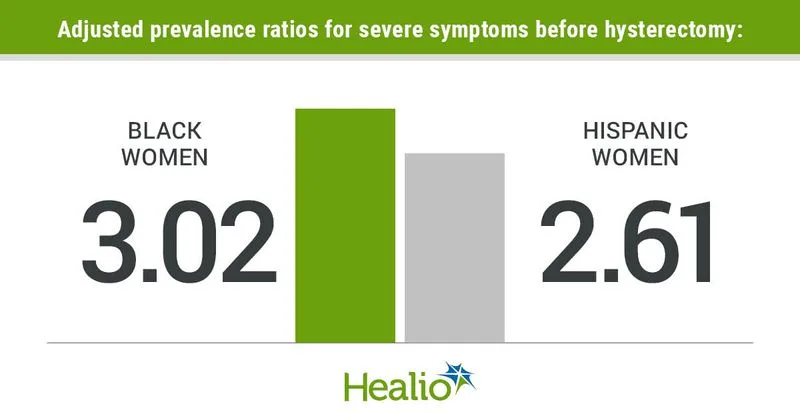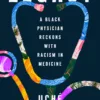August 31, 2023
2 min read
Source/Disclosures
Disclosures:
Robinson reports no relevant financial disclosures. Please see the study for all other authors’ relevant financial disclosures.
Key takeaways:
- Premenopausal Black and Hispanic vs. White women report worse bleeding and other symptoms before hysterectomy.
- No racial/ethnic differences were seen in number of uterine-sparing treatments before hysterectomy.
Black and Hispanic premenopausal women are more likely to experience severe bleeding and other symptoms related to noncancerous gynecologic conditions before undergoing hysterectomy compared with white women.
“A lot of the Black and Latina hysterectomy patients are suffering a lot right before their surgeries,” Whitney R. Robinson, PhD, associate professor in obstetrics and gynecology in the division of women’s community and population health and the department of obstetrics and gynecology at Duke University School of Medicine, told Healio. “We need better health care approaches earlier in these women’s lives to help prevent their symptoms from getting so bad.”

Robinson and colleagues analyzed electronic health record data from 1,703 women (mean age, 40 years) who underwent hysterectomy at a large health care system in the southern U.S. from 2014 to 2017. Researchers assessed symptom severity for differences in hysterectomy rates for noncancerous conditions among premenopausal non-Hispanic Black (n = 565), non-Hispanic white (n = 1,050) and Hispanic (n = 158) women.
More than 95% of white and Black women and 58.9% of Hispanic women were insured. In addition, 63.7% of white, 58.4% of Black and 34.2% of Hispanic women were treated outside of academic medical centers.
Results, published in Obstetrics & Gynecology, found that compared with white and Hispanic women, Black women had higher bleeding severity scores (median, 4 and 7 vs. 8, respectively) and higher bulk scores (median, 0 and 1 vs. 3, respectively). Researchers observed a higher likelihood of documented severe symptoms for two or more symptoms among Black (adjusted prevalence ratio [aPR] = 3.02; 95% CI, 2.29-3.99) and Hispanic (aPR = 2.61; 95% CI, 1.78-3.83) women compared with white women.
Despite a higher likelihood of experiencing severe symptoms among Black and Hispanic women, researchers noted no racial or ethnic differences in the number of uterine-sparing treatments attempted before hysterectomy.
“We need a lot more research to understand all the ways people cope, or not, with heavy bleeding, gynecologic pain and other symptoms across their lives, from adolescence into menopause,” Robinson said. “Once we know how people are managing these conditions on their own, or with alternative medicine, and the kinds of help they get, or not, from the health care system, we can start to research what approaches work best for what kinds of people.”
For more information:
Whitney R. Robinson, PhD, can be reached at whitney.robinson489@duke.edu.



